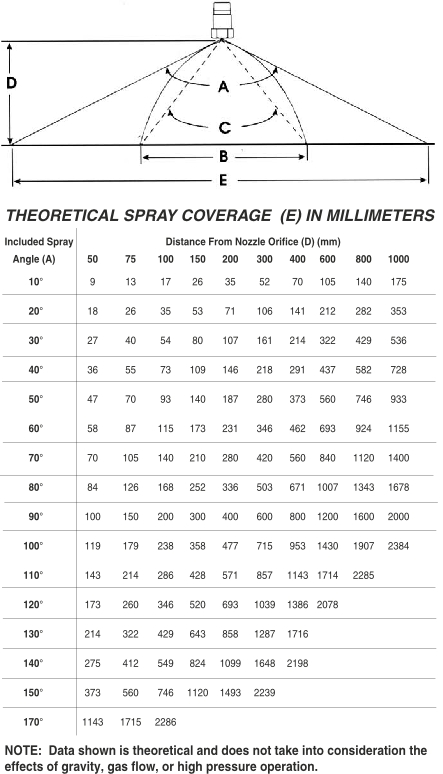Spray coverage
When considering the coverage of spray a nozzle will give the spray angle that it is rated at as starting point of any calculation. This calculation, however, is not always a matter of simple trigonometry.
SPRAY ANGLE TERMS
Four terms are commonly used to describe spray coverage:

Spray angle: (A) The included angle of the spray as measured close to the nozzle orifice. Since the droplets are immediately acted upon by external forces (gravity and moving gases, for example), this measurement is useful only for determining spray coverage close to the nozzle. The spray angles listed for nozzles in this catalogue are angles at the nozzle, measured at the nozzle’s design pressure.
Actual spray coverage: (B) The actual coverage at a specified distance (D) from the nozzle.
Effective spray angle: (C) The angle calculated from the actual coverage (B) at a distance (D).
Theoretical spray coverage: (E) The coverage at distance (D) if the spray moved in a straight line.
EXAMPLES:
Problem: To achieve a 200mm diameter spray coverage from a nozzle mounted 150mm from the target, what spray angle would be required? Solution: 70° Spray angle
Problem: How far from the target should a nozzle with a 110° spray angle be mounted in order to achieve a 550mm diameter spray? Solution: Approximately 200mm. (Actual coverage will be less than theoretical coverage listed in the table.)